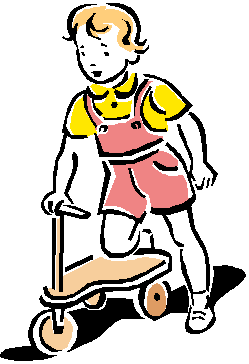
Goals
In this section of the course, we will examine how the collection development policy provides goals for the collection, and we will examine how these goals can be developed. We will examine typical criteria that libraries use when deciding whether or not to purchase a particular item--whether that item is a book, a periodical, an audio-visual item, a CD-ROM product or access to an on-line service.
The Mission Statement and the Goals
The goals for the collection will be driven by the library's mission. A school library whose mission is to support the school curriculum will use "relationship to curriculum" as a primary criterion for selecting materials. A hospital library will usually collect many more materials in the health sciences than the public library down the street. A college or university library will normally collect more technical material than a public library. However, this may vary from community to community. A public library which includes in its mission the support of university programs, for instance, should collect more technical material than a similar public library that does not have such a mission.

Thus, the goals for developing the collection should relate directly to the library's mission. As you work on your collection development policy, the library's mission must always be considered.
The Library's Audience
The library's mission statement should help you define the library's primary and secondary clientele. For a school library, the clients typically are students and faculty. A college or university library may also add alumni or other members of the community. A hospital library may focus on medical staff, but it may also serve patients. If it serves patients, it should describe whether this service is just for medical information or whether it includes recreational reading. The public library, of course, serves its entire community, but it may decide to focus on particular community needs, such as for recreational reading or independent students.
Once the library audience has been delineated, the collection development policy should state how the needs of this audience for materials or information will be met.
Response to Audience Needs
When the clientele for the library has been determined, the staff and board should think about the library needs of this clientele, whether some of those needs are being met by other libraries in the community and the role that their library can or should have in meeting these needs.

For example, let's say that a public library has a mission to meet the needs of children. What are those needs? Certainly, they have a need for materials to help them do their school work, but perhaps there is a good school library that meets these needs. They also have a need for recreational reading materials. Many children are also very interested in electronic information and games. Based on this, your library may choose to focus its collection development goals for children's materials on recreational reading and electronic information for children.
Once you have listed the audiences and their needs for your library, you should evaluate how well your library is doing in meeting these needs.
Don't Forget the Non-Users!
You should not forget those people in your community who could use the library, but who at present do not. There are many reasons why people do not use a library. It may be that the library is not open when they can use it. It may be that they have had a bad experience with a library in the past. But it may also be that the library does not have materials or collection services that they can use. For example, if a library is in a community with a large number of Spanish speakers, but doesn't have materials in Spanish or materials about Hispanic culture, Hispanics are not likely to use the library. Similarly, if the library's collection is made up largely of materials that are of interest to women, it is not likely that men will use it much. As you create your collection development goals, you should consider whether the collection keeps some potential users away. If it does, changes are called for.
Goal Analysis Exercise
Before going on, read your mission statement.
Then make a list of all of the groups who are the primary clientele for your library. Primary clientele are those groups on whom the library focuses its attention. For example, the medical staff may be the primary clientele for a hospital library. Then list secondary clientele--groups that can use the library, but who are not the primary focus of the library's services. For the hospital library, a secondary group may be patients or patients' families.
After you have listed the clientele for your library, write down the most important library needs for each group. If a group has a library need that is met by another library in your community, make a note that this need is being met.
Now for each library need, rate how well your library is meeting the need.
Finally write a goal for the collection.
Below is an example of how this goal analysis might be carried out.
Goal Analysis Exercise Example
Clientele 1: Adults
Need 1: Independent learning. Adults need materials to help them keep pace with the changes in the world. Our budget does not allow us to purchase highly technical and specialized materials, but we make this available through interlibrary loan and our Internet database services.
Goal: We will provide basic materials to support independent learning activities for adults.
Goal: We will use interlibrary loan and the LiLI databases to support independent learner's needs for technical information.
Need 2: Recreational reading and viewing. Many adults read for pleasure. Our mission focuses on this need. We purchase many bestsellers and other popular reading materials. We provide some video resources.
Goal: We will provide popular reading and viewing materials in a timely manner.
Need 3: Self-help materials. Adults need materials to help them carry out their functions as householders and parents. We provide basic self-help materials in home care and parenting, but have not done well in providing financial self-help information.
Goal: We will provide general self-help materials in all aspects of adult life.
After completing this exercise, click the arrow below to go the next page